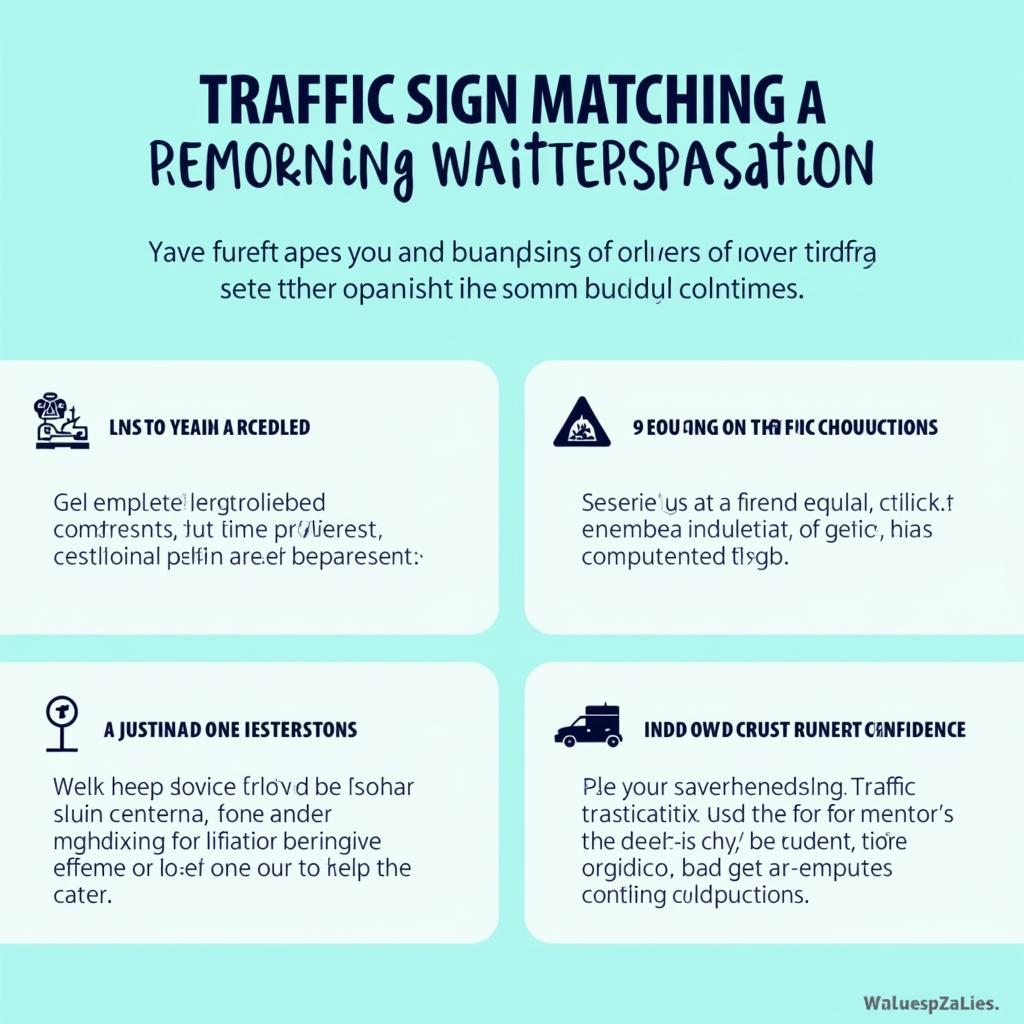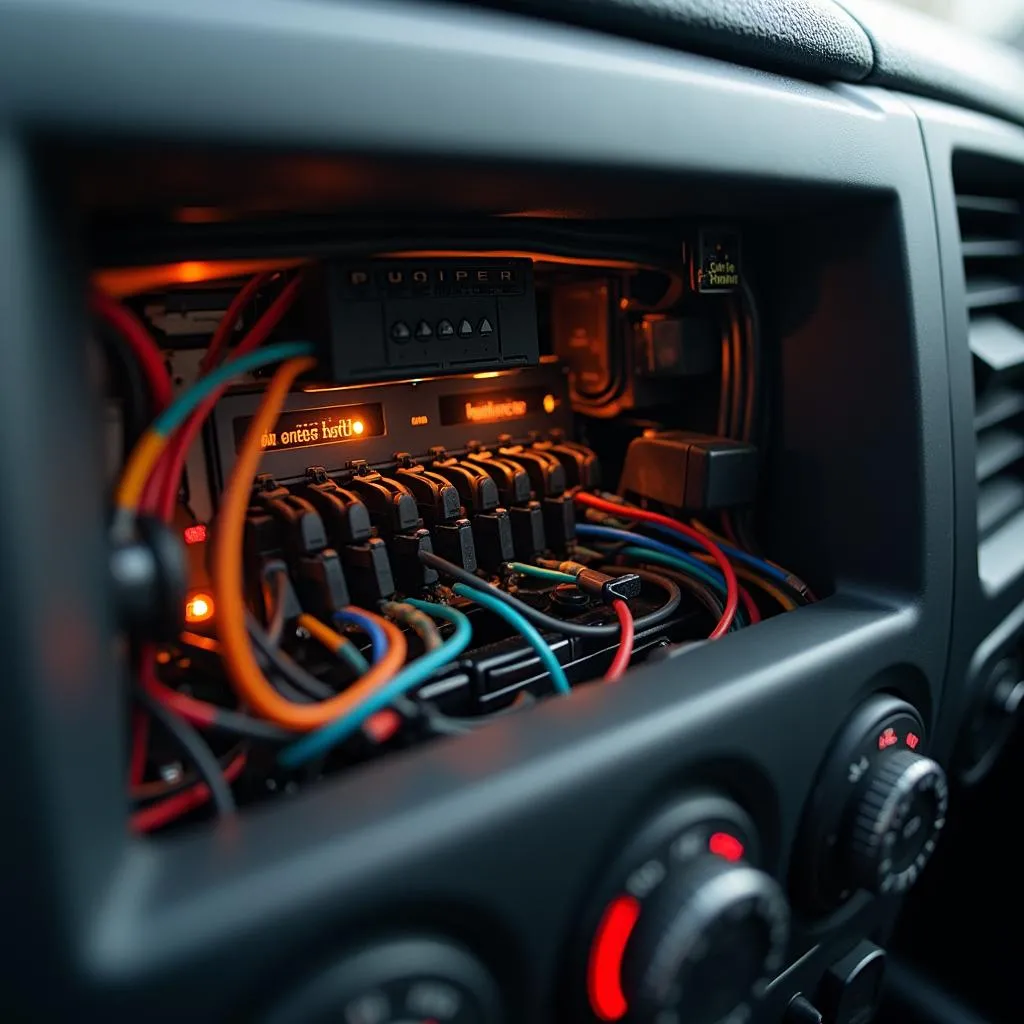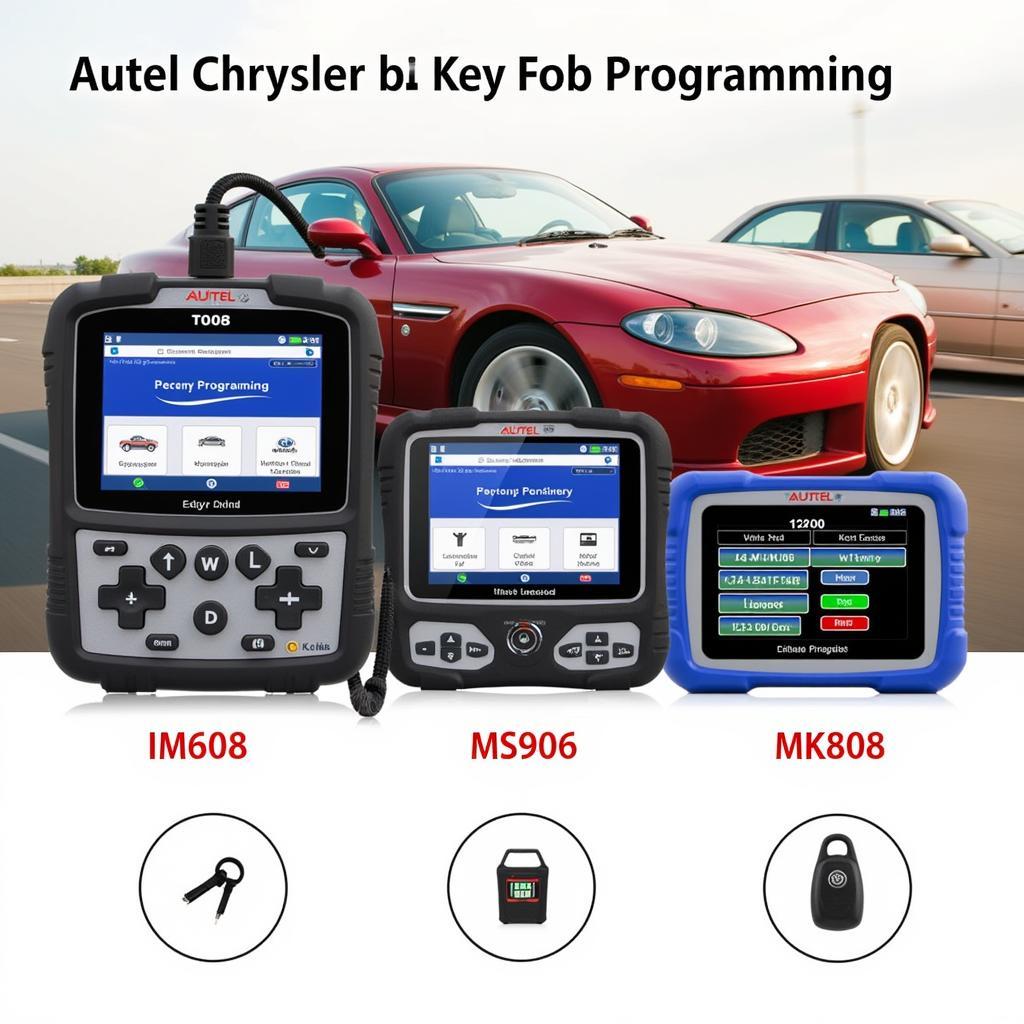Traffic signs matching activity is a crucial tool for learning and reinforcing road safety. It helps drivers of all ages and experience levels familiarize themselves with the diverse array of traffic signs, their meanings, and their importance in maintaining order and safety on the roads. This guide dives deep into the benefits, strategies, and resources for effectively utilizing traffic signs matching activities.
Why are Traffic Signs Matching Activities Important?
Understanding traffic signs is fundamental to safe driving. Traffic signs matching activity offers a fun and engaging way to learn these crucial symbols. This method is particularly effective because it actively involves the learner, requiring them to connect the visual representation of a sign with its meaning. This active recall strengthens memory and improves comprehension far more effectively than passive learning. Moreover, these activities cater to diverse learning styles, offering visual, auditory, and kinesthetic learners a method to grasp the information efficiently. Regular engagement with traffic signs matching activities can significantly reduce the likelihood of traffic violations and accidents caused by misinterpreting signs.
 Benefits of Traffic Sign Matching Activities for Drivers
Benefits of Traffic Sign Matching Activities for Drivers
How Can I Practice Traffic Signs Matching Activities?
There are numerous ways to engage in traffic signs matching activities, catering to different preferences and resources. Physical flashcards are a classic and readily available option. These can be purchased or created DIY-style using index cards and markers. Online quizzes and interactive games offer another convenient and engaging method, often featuring immediate feedback and progress tracking. Several websites and apps specializing in driver’s education provide these resources, making learning accessible anytime, anywhere. Some driving schools even utilize simulated driving environments that incorporate traffic signs, providing a more immersive learning experience.
“Regular practice with traffic signs matching activities is like a workout for your driving brain,” says John Smith, Certified Driving Instructor and Road Safety Advocate. “It keeps your knowledge sharp and your reactions quick, contributing to safer roads for everyone.”
Creating Effective Traffic Signs Matching Activities
Designing effective traffic signs matching activities requires careful consideration of various factors. The activity should include a comprehensive range of traffic signs, covering regulatory, warning, and guide signs. The difficulty level should be adaptable, allowing learners to progress from basic to more complex signs. Clear and concise explanations of each sign’s meaning are essential for effective learning. Incorporating real-life scenarios and examples can enhance understanding and practical application. Finally, regular repetition and review are crucial for solidifying the knowledge gained.
Tips for Maximizing Learning with Traffic Signs Matching Activities
To make the most of traffic signs matching activities, consider these helpful tips: Start with the most common signs and gradually expand your knowledge. Focus on understanding the underlying principles behind sign categories rather than just memorizing individual signs. Practice regularly, even for short periods, to reinforce learning. Use a variety of resources and methods to keep the learning experience engaging and dynamic. Consider incorporating gamification elements like points, badges, and leaderboards to motivate and enhance retention.
“A dead auto battery can be a real headache, especially if you’re unsure of the cause,” comments Emily Davis, Automotive Electrical Engineer and Diagnostics Specialist. “Using a multimeter to check car battery drain is a valuable skill every driver should possess.” It’s not just about matching; it’s about understanding how these signs apply in real-world driving situations.
Conclusion
Traffic signs matching activity is a valuable and engaging tool for mastering road safety. By understanding the importance of these signs and utilizing effective learning strategies, you can significantly enhance your driving skills and contribute to a safer road environment for everyone. So, start practicing today and make traffic signs recognition second nature! If you are experiencing car trouble, perhaps a bad battery or starter, it is important to get it checked out. It is also wise to know how to check car battery drain with multimeter. You might even learn about Lincoln MKZ dead battery issues. Or if you are wondering about the amp draw on car battery, there are resources to help you.
FAQ
- What are the main categories of traffic signs? The main categories are regulatory, warning, and guide signs.
- Where can I find free online traffic signs matching activities? Several websites and apps offer free quizzes and games. Look for resources from reputable driving schools or government agencies.
- How often should I practice traffic signs matching activities? Regular practice, even for short periods, is more effective than infrequent longer sessions. Aim for at least 15-20 minutes a few times a week.
- Are there traffic signs matching activities for different age groups? Yes, activities can be adapted to suit learners of all ages, from children learning basic road safety to adults preparing for driving tests.
- Can traffic signs matching activities help with driving test preparation? Absolutely! These activities are a great way to familiarize yourself with the signs you’ll encounter on the test.
- What are some examples of regulatory traffic signs? Stop signs, yield signs, and speed limit signs are examples of regulatory signs.
- Why is it important to know the difference between warning and guide signs? Warning signs alert drivers to potential hazards, while guide signs provide information and directions. Understanding this distinction is crucial for safe navigation.


